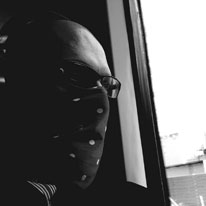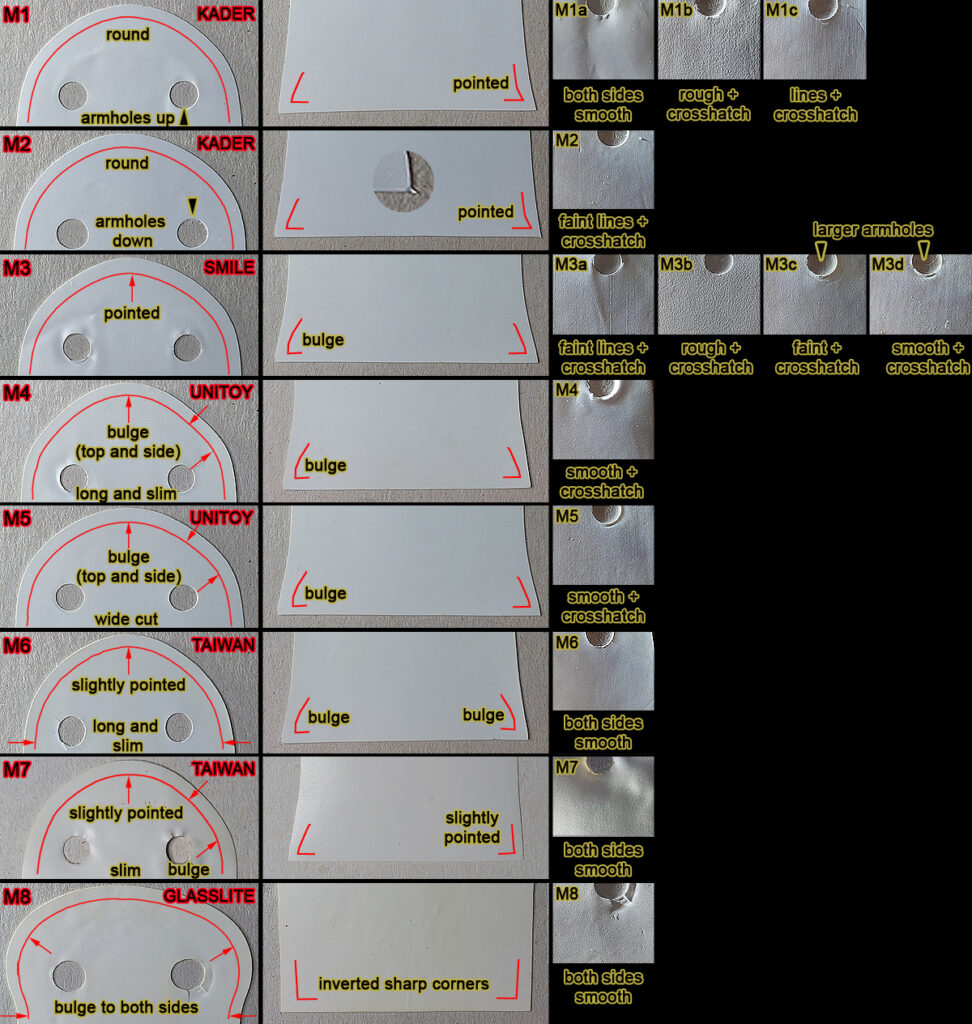Princess Leia Organa Cape

Wolff
TABLE OF CONTENTS
The Princess Leia Organa Cape was usually released with the following combinations of colour to figure:
White Vinyl Cape:
There are 8 main variations plus subvariants. Subvariants do exist and may not all be documented. As a result of the fact that these were produced from a vinyl sheet bought from a third party involved, the subvariants may vary heavily depending on the supplier.
Vinyl cape material (PVC) is made out of a heated mass, rolled and milled in several processes to finally get printed or not. That is important to know, because shrinkage can occur to them when heated again, also depending if they were cold milled or heated milled in the last steps and the directions they were milled. Giving exact dimensions of 35+ year old PVC capes is not very helpful for a guide. They were likely die-cut under tension which would also contribute to capes produced in varying sizes from the same source.
So overlaying those to see differences isn’t helpful in most cases. What we have to do is look for overall differences in shapes, forms and die-cuts. For that reason I will refrain on measurements on all vinyl capes but have a scale on all my pictures for reference.
A Princess Leia Organa Cape does not have a given front or back. But all of those capes have a left and right side determined by the asymmetrical shape of the cape. A front and back side was then assigned to make them comparable in the guide.
M1 was produced by KADER in Hong Kong. Kader capes can be distinguished by their very round formed collar. The armholes are usually not in line. Early Kader capes came without crosshatch pattern.
The following versions are known:
- smooth/faint, no crosshatch (M1a)
- smooth/faint, no crosshatch (damaged cutting tool) (M1a)
- rough/crosshatch (M1b)
- lines/crosshatch (M1c)
M2 was produced by KADER in Hong Kong. This version is a later produced version of the M1. The armholes moved down and also the interspace got larger to prevent them from tearing. The following versions are known:
- faint lines/crosshatch (M2)
M3 was produced by SMILE in Hong Kong. Smile capes all do have a pointed top to the collar. Early capes have smaller armholes. They got bigger in a later period to prevent them from tearing. The following versions are known:
- faint lines/crosshatch (small holes) (M3a)
- rough/crosshatch (small holes) (M3b)
- faint/crosshatch (M3c)
- smooth/crosshatch (M3d)
M4 was produced by UNITOY in Hong Kong. Unitoy capes can be spotted by the bulgy top and sides of the collar. This cape is a very early version with narrow armholes. This was corrected later because they all did split easily. The following versions are known:
- crosshatch/smooth (M4)
M5 was produced by UNITOY in Hong Kong. The following versions are known:
- crosshatch/smooth (M5)
M6 was produced by an unknown factory in TAIWAN. Early Taiwan capes are long and very slim with narrow armholes and bulgy corners. The following versions are known:
- smooth/faint, no crosshatch (M6)
M7 was produced by an unknown factory in TAIWAN. These capes are a bit shorter compared to M6 capes but still slim with narrow armholes. The following versions are known:
- faint/faint, no crosshatch (M7)
M8 was produced by GLASSLITE in Brazil. The shape of those capes is very unique and an easy spot. The following versions are known:
- faint/smooth (M8)
The RETRO COLLECTION was introduced in 2019 by HASBRO. The figures are licensed reproductions made to look like the figures from the 70s and 80s. These figures look very similar to the originals at first glance, but on closer inspection you can see clear differences. The capes are also made like look-a-likes.
The cape is much wider and taller then any vintage cape known. Both sides are smooth and therefore no crosshatch pattern is present. It mostly imitates the shape of the M1 version from KADER:
*Coming soon
The R2 cape is handcut (see irregularities to the round top of the collar). The large armholes are very unique and therefore an esay spot. The material is way more rigid then normal capes and like already seen on Lando Capes made out of two self-adhesive foils with structured surface. There is no crosshatch pattern present.
The R2 cape is a recut of the M1 version from KADER:
The R3 cape is handcut. The outer shape, especially the huge spooky corners are an easy spot. They seem to be long on the market by now because they are out there with stains and in different yellowed stages. There is no crosshatch pattern present.
The R3 cape is a mixed recut of the M1 version from KADER (collar) and the M5 version from UNITOY (corners):
The R5 cape is handcut and very well made. The outer shape is asymetrical and the corners and the bulgy top look spot on. The material feels slightly stiffer compared to vintage ones but is partially stained and yellowed. The inner part is very glossy, that’s what makes this conspicious. There is also no crosshatch pattern present.
The R5 cape is a recut of the M3 version from SMILE:
Princess Leia Organa Figure Guide
Glasslite Princess Leia Organa Guide
Poch Princess Leia Organa Guide
Bootleg Princess Leia Organa

